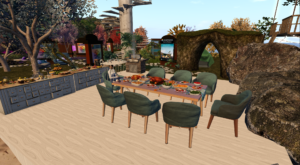Premise and Purpose Audience and Market Every quarter, there is something added to the storytelling […]
Healthcare, Wellness, and Access in XR (Extended Reality)
Being able to showcase a welcoming environment catered to specific people/to support specific people is […]
Virtual Communities and Digital Storytelling
Watching “Virtual Cultures in Pandemic Times” was a very informative and rather cozy documentary, and […]
A Side Quest
When I first started my college career, my intention was to go into this learning […]
Locations in Second Life
Botanical | Retail The first location that I went to was the Botanical garden ran […]
Creating Virtual Goods in a Virtual World
While I myself don’t have many plans for creating virtual goods within a virtual world […]
Immersive Engagement Proposal
Premise and Purpose The Hero’s Journey is a project that has been worked on by […]

